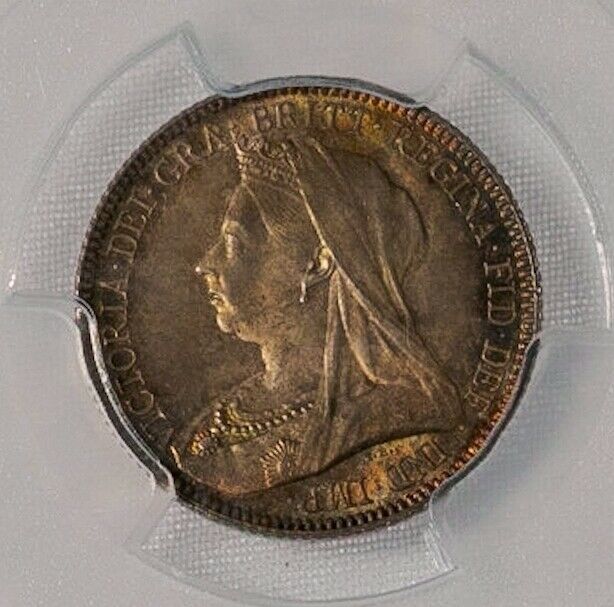-40%
Great Britain Victoria 6 Pence 1893 PCGS MS66 Beautiful Golden Toning !
$ 181.63
- Description
- Size Guide
Description
Great Britain, Victoria, 6 Pence 1893 MS66 PCGS,KM779, S-3941.
PCGS Population [11/1]. Total of 46 graded by PCGS.
Lovely mix of peripheral toning in gold, aqua and scarlet.
Combined shipping available. Please view our high definition photos.
Victoria
(Alexandrina Victoria; 24 May 1819 – 22 January 1901) was
Queen of the United Kingdom of Great Britain and Ireland
from 20 June 1837 until her death. On 1 May 1876, she adopted the additional title of
Empress of India
. Known as the
Victorian era
, her reign of 63 years and seven months was
longer than that of any of her predecessors
. It was a period of industrial, cultural, political, scientific, and military change within the United Kingdom, and was marked by a great expansion of the
British Empire
.
Victoria was the daughter of
Prince Edward, Duke of Kent and Strathearn
(the fourth son of
King George III
), and
Princess Victoria of Saxe-Coburg-Saalfeld
. After both the Duke and his father died in 1820, she was
raised under close supervision
by her mother and her
comptroller
,
John Conroy
. She inherited the throne aged 18 after her father's three elder brothers died without surviving legitimate issue. The United Kingdom was an established
constitutional monarchy
in which the sovereign held relatively little direct political power. Privately, she attempted to influence government policy and ministerial appointments; publicly, she became a national icon who was identified with strict standards of
personal morality
.
Victoria married her cousin
Prince Albert of Saxe-Coburg and Gotha
in 1840. Their
children
married into royal and noble families across the continent, earning Victoria the
sobriquet
"the grandmother of Europe" and spreading
haemophilia in European royalty
. After Albert's death in 1861, Victoria plunged into deep mourning and avoided public appearances. As a result of her seclusion,
republicanism in the United Kingdom
temporarily gained strength, but in the latter half of her reign, her popularity recovered. Her
Golden
and Diamond Jubilees were times of public celebration. She died on the
Isle of Wight
in 1901. The last
British monarch
of the
House of Hanover
, she was succeeded by her son
Edward VII
of the
House of Saxe-Coburg and Gotha
.















